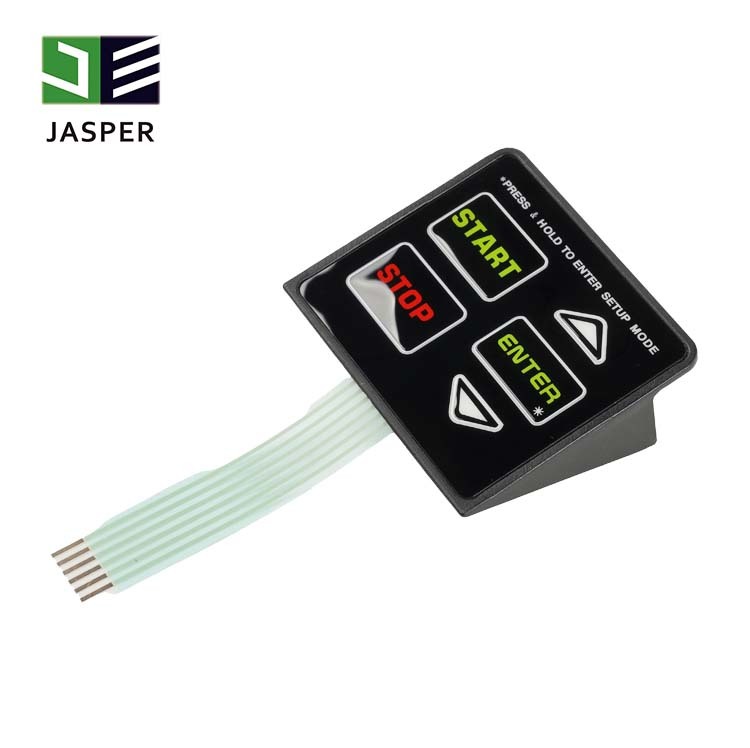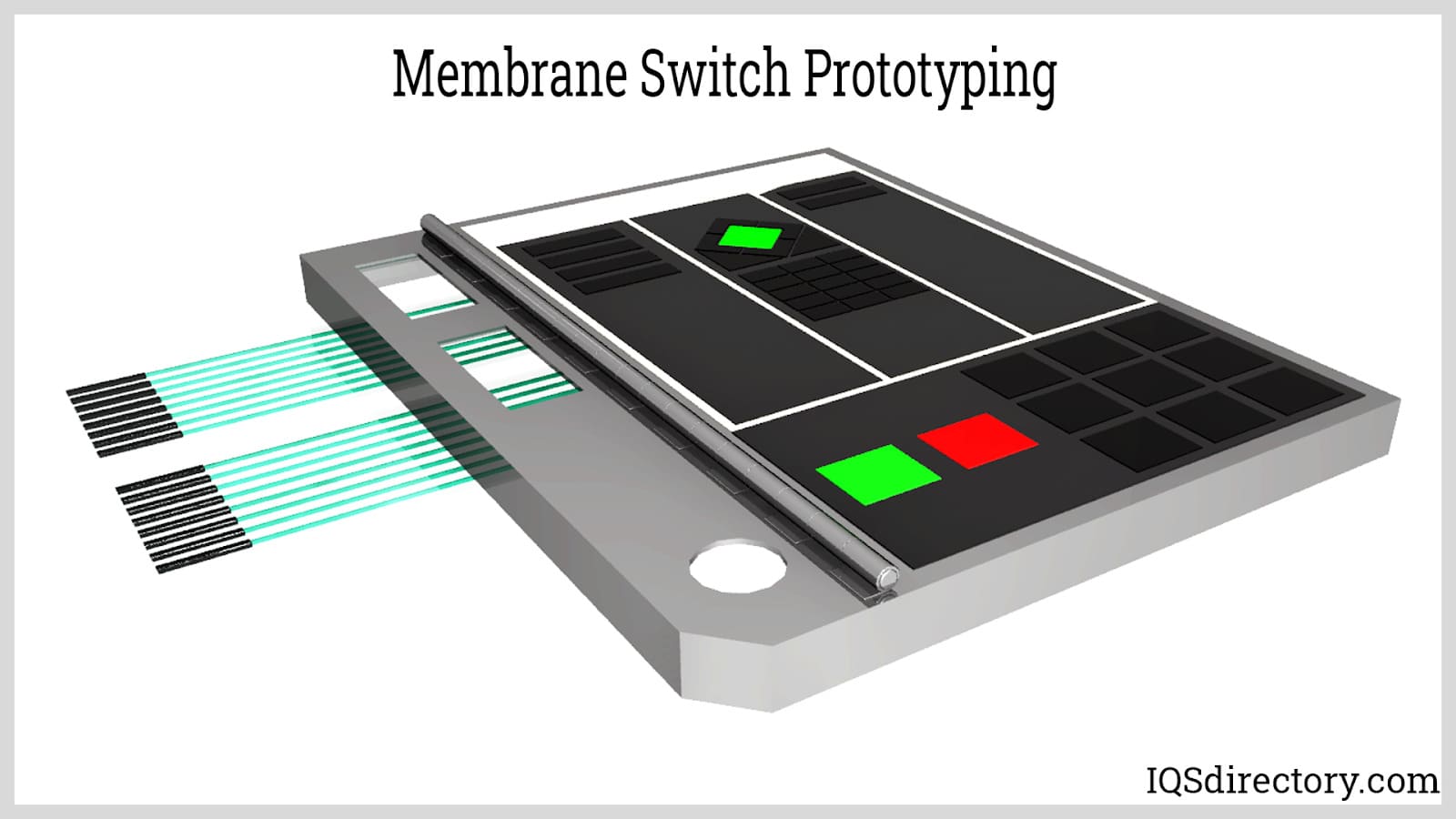Recognizing the Value of Membrane Switch in Modern Electronics
Membrane switches are indispensable parts in modern-day digital devices. They provide a blend of functionality and design that improves individual interaction. Their sturdy and light-weight nature makes them suitable for various applications. As industries evolve, the need for modification and progressed functions grows. Understanding how membrane switches over add to innovation discloses their importance in forming the future of electronic devices. What lies ahead for this modern technology?
The Basics of Membrane Layer Switch Modern Technology
Although frequently neglected, membrane switch innovation plays an important role in the modern-day electronic devices landscape - membrane switch. These devices, made up of multiple layers, act as interface for numerous electronic products, ranging from house home appliances to clinical equipment. A regular membrane layer switch is composed of a graphic overlay, a spacer layer, and a circuit layer, which are carefully constructed to create a practical interface.When pressure is put on the overlay, the circuit layer is finished, allowing signals to be sent to the gadget. This technology is recognized for its flexibility, making it possible for personalization in capability, form, and style to fulfill particular individual requirements. In addition, membrane switches are light-weight and thin, making them appropriate for applications where room is a premium. Their longevity and resistance to environmental elements better boost their appeal, ensuring they can hold up against harsh conditions while preserving performance. In general, membrane button technology is important to creating easy to use and effective electronic devices

Trick Advantages of Membrane Switches
Membrane layer changes deal numerous crucial advantages that make them a preferred selection in different digital applications. Their style enables a portable kind variable, allowing makers to create light-weight and smooth devices. In addition, membrane switches are immune to dust, dampness, and chemicals, which boosts their durability and long life popular settings. The responsive comments provided by these switches can enhance customer experience, making them simple and instinctive to operate.Furthermore, membrane switches can be personalized with diverse graphics and colors, enabling for one-of-a-kind branding chances. The production process is usually cost-efficient, particularly for high-volume manufacturing, as it decreases setting up time and simplifies layout. Lastly, membrane changes call for minimal upkeep, adding to reduced overall operational prices. These benefits underscore their growing popularity in modern-day electronic devices, where reliability and straightforward interfaces are crucial.

Applications Across Numerous Industries
The adaptability of membrane layer switches over enables their widespread fostering throughout numerous markets. In the clinical area, they are generally made use of in diagnostic equipment and person tracking systems, using a resilient user interface resistant to contaminants. The automotive market utilizes membrane layer switches for control panel controls, enhancing individual experience with streamlined designs that withstand harsh conditions. In customer electronic devices, they function as control panels for devices such as microwaves and coffee machine, providing a straightforward user interface that is very easy to tidy. The aerospace market utilizes membrane layer switches in cabin controls, where integrity and area performance are critical. Additionally, the commercial industry leverages these buttons in machinery and control systems to ensure robust procedure sought after settings. check my site This wide array of applications highlights the versatility of membrane layer switches, making them integral parts in enhancing performance and customer interaction throughout varied technical landscapes.
Customization and Layout Versatility

Future Fads in Membrane Change Growth
Arising fads in membrane layer switch development show an expanding emphasis on improved performance and combination with smart modern technologies. As consumer need for more sophisticated electronic devices boosts, producers are focusing on creating membrane layer switches that not just serve basic operational roles yet additionally include features like touch sensitivity, backlighting, and haptic feedback.Furthermore, advancements in products are anticipated to improve sturdiness and ecological resistance, making membrane changes suitable for diverse applications in markets such as medical care, automotive, and customer electronics. The integration of capacitive touch innovation is most likely to become more widespread, enabling sleeker designs and improved customer interfaces. membrane switch.Additionally, the increase of the Internet of Points (IoT) is triggering the advancement of membrane switches over that can interact wirelessly with various other tools, improving interconnectivity. Overall, the future of membrane switch modern technology appears encouraging, driven by advancement and the pursuit of straightforward options
Frequently Asked Inquiries
Exactly How Do Membrane Switches Over Compare to Conventional Mechanical Switches?
Membrane layer switches, being extra space-efficient and providing a smooth design, contrast with typical mechanical switches that supply responsive feedback. The previous often include personalized graphics, while the last typically ensure durability and dependability in various applications.
What Products Are Commonly Used in Membrane Layer Switch Over Production?
Membrane layer buttons are typically generated making use of materials such as polyester, polycarbonate, and printed conductive inks. These materials offer responsiveness, longevity, and flexibility, making them appropriate for numerous applications in digital tools and interface.
Can Membrane Changes Be Repaired or Reused?
Membrane layer buttons can usually be fixed, specifically if minor concerns emerge, such as glue failing or surface area damages. Full reuse is generally limited due to wear and possible deterioration of materials over time.
How Do Environmental Variables Influence Membrane Switch Efficiency?
Environmental elements, such as moisture, temperature, and direct exposure to chemicals, significantly affect membrane layer switch efficiency. Severe conditions can bring about deterioration, impacting responsiveness and durability, inevitably jeopardizing the capability of the gadget in different applications.
What Is the Common Life-span of a Membrane Change?
The normal life-span of a membrane button typically varies from 1 to 5 million actuations, depending on elements such as use frequency, environmental conditions, and the products used in manufacturing, influencing resilience and performance longevity. A common membrane layer switch consists of a graphic overlay, a spacer layer, and a circuit layer, which are thoroughly assembled to produce a practical interface - membrane switch.When stress is applied to the overlay, the circuit layer is completed, enabling signals to be transferred to the gadget. The tactile feedback offered by these switches can boost user experience, making them intuitive and simple to operate.Furthermore, membrane switches can be personalized with varied graphics and shades, permitting for special branding opportunities. As customer need for a lot more sophisticated electronic devices boosts, suppliers are focusing on developing membrane layer changes that not only offer basic functional membrane switch duties however likewise include functions like touch sensitivity, backlighting, and haptic feedback.Furthermore, innovations in products are expected to improve toughness and environmental resistance, making membrane layer switches over appropriate for varied applications in markets such as health care, auto, and consumer electronic devices. The assimilation of capacitive touch modern technology is most likely to end up being extra widespread, allowing for sleeker styles and enhanced user interfaces.Additionally, the rise of the Internet of Points (IoT) is motivating the advancement of membrane switches over that can communicate wirelessly with other gadgets, boosting interconnectivity. Membrane layer buttons, being a lot more space-efficient and providing a streamlined style, contrast with standard mechanical switches that supply responsive responses
Comments on “Latest trends in membrane switch development”